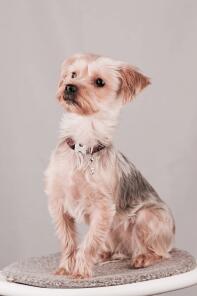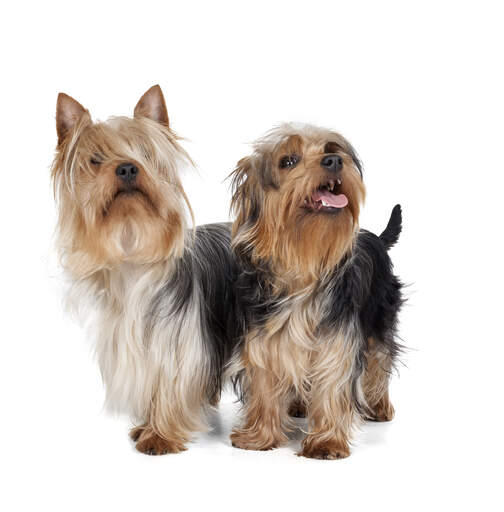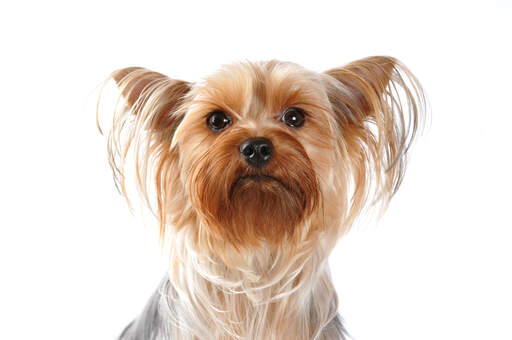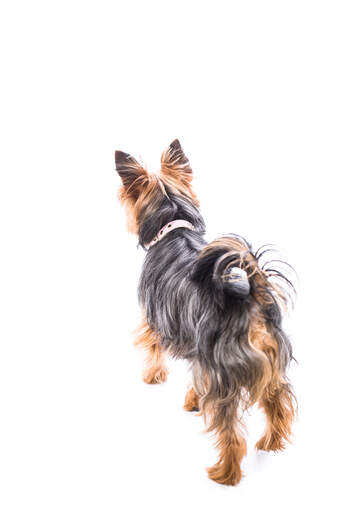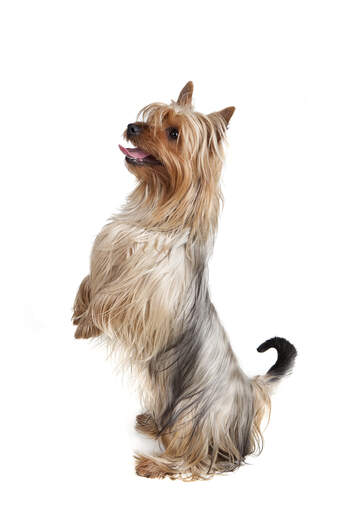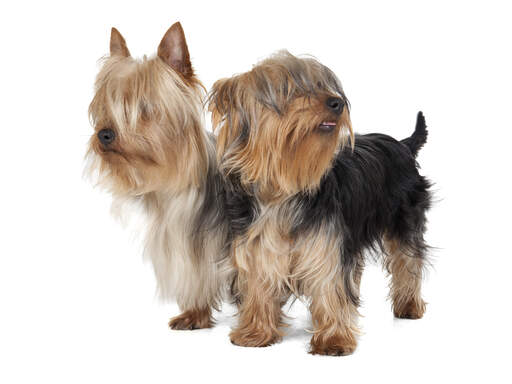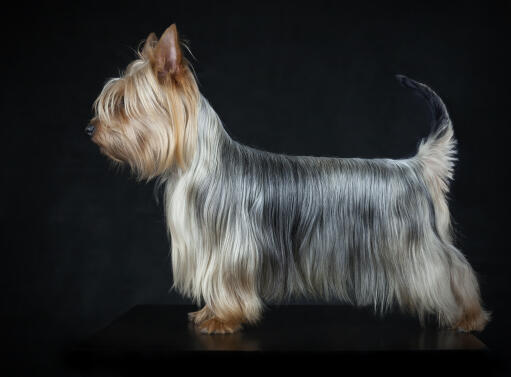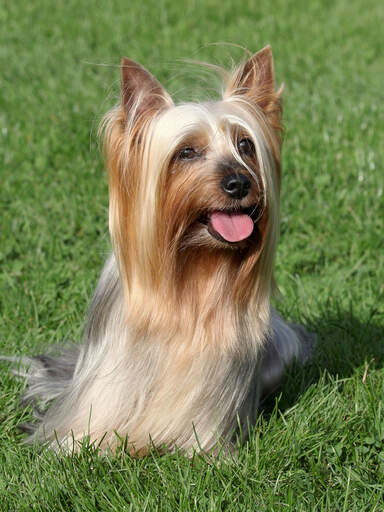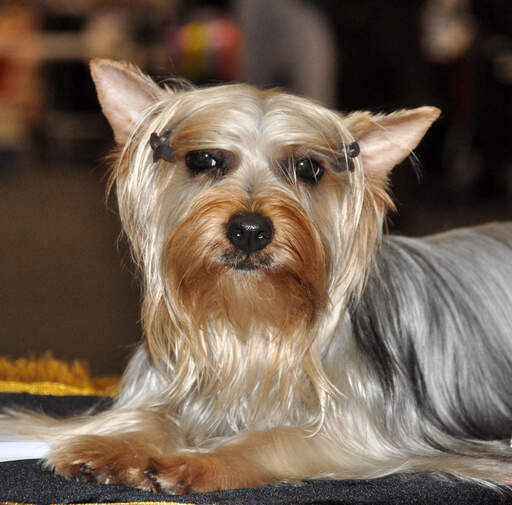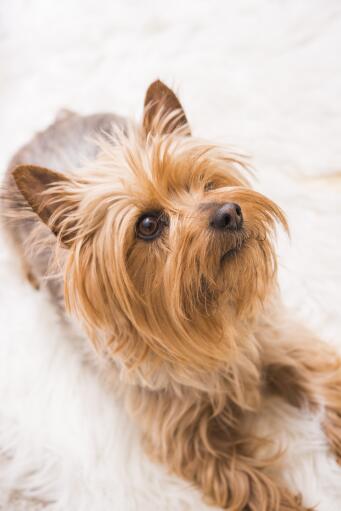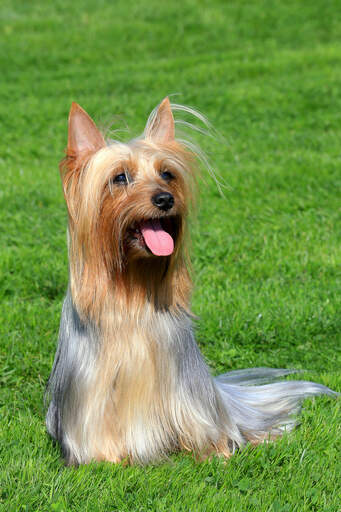Silky Terrier hund











History
The Silky Terrier originates in the 1890's from Australia where it was developed by crossing imported Yorkshire Terriers with the native Blue and Tan Australian Terriers. The result produced a small dog with long silky fur - the breed we recognise today. The breed standard was drawn up in the early 1900's. They are known as Australian Silky Terriers in their home land and Silky Terriers in the rest of the World.
Behaviour
These small dogs are mischievous, active and playful, but still a Terrier at heart. They are often put into the Toy dog group, but there is no mistaking their prey drive and they will often chase small animals and disappear down a rabbit hole in search of prey. They are ok with older children, but their small size, and more fragile frame, make them unsuitable for the rough play of a younger child. They make excellent watch dogs and will bark when there is someone at the door. They are reserved with strangers at first, but usually willing to accept them once you have let them in. They can be scrappy with other dogs, even those 10 times their size if not properly socialised. These dogs are clever and will learn quickly if given consistent training. They like to be around you and their family and play is one way of teaching them new tricks and basic obedience. Their intelligence makes them prone to boredom, so play, games and walking them often will keep their minds active and prevent problems. They will gladly sleep on your lap for attention, but this is no ordinary 'lap dog'. They will be really to jump up at the door the second they hear someone approaching. They will bark a lot unless trained not to. Their need to be close to people can sometimes result in separation anxiety, so teach your Silky early on, that being left for a few hours isn't a problem. If done from an early age they will accept it as the norm. They are best suited to a household with someone in for most of the day, but due to their size, they are often taken everywhere and enjoy the company. Silky Terriers are active dogs who need the chance to burn off nervous energy either by walks or play. They love to play ball in the house, but are happiest when out and about and exploring the outdoors. They like to dig, so to protect your garden, it might be worth setting up a sand pit and encouraging your Silky to dig there instead.
Their long coat will need daily brushing and trimming when it gets too long. A monthly bath will keep the coat is good condition.They can suffer Patellar Luxation and Tracheal Collapse - using a harness rather than a collar helps.
Temperament
Silky Terriers have an alert and inquisitive temperament. They are clever little dogs who are curious about everything and will have to explore every corner of any new place they go. They should be socialised as early as possible so they learn that strange dogs and people are not a threat. Noisy like most terriers the Silky will have to announce the arrival of anyone.
Health Problems
Health problems that may affect Silky Terriers include cataracts, progressive retinal atrophy (degeneration of the retina which can lead to blindness), cancer, allergies, patellar luxation (dislocation of the knee cap), Legg Calvé Perthes disease (degeneration of the femoral head which can cause lameness and joint swelling), canine hip dysplasia (CHD) and epilepsy.
Breed Details
- Status: Common
- Life Expectancy: 12 - 15 years
- Weight: 4 - 5 kg
- Højde: 9 - 10"
- Rare: Nej
- Coat: Medium
- Grooming Requirements: More than once per week
- Town or Country: Either
- Minimum Home Size: Flat
- Minimum Garden Size: No Garden
- Breed Type: Toy Dog
- Størrelse: Lille
- Energy Level: Høj
- Exercise Required: Up to 30 Minutes
Billeder af Silky Terrier
